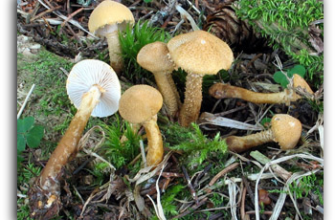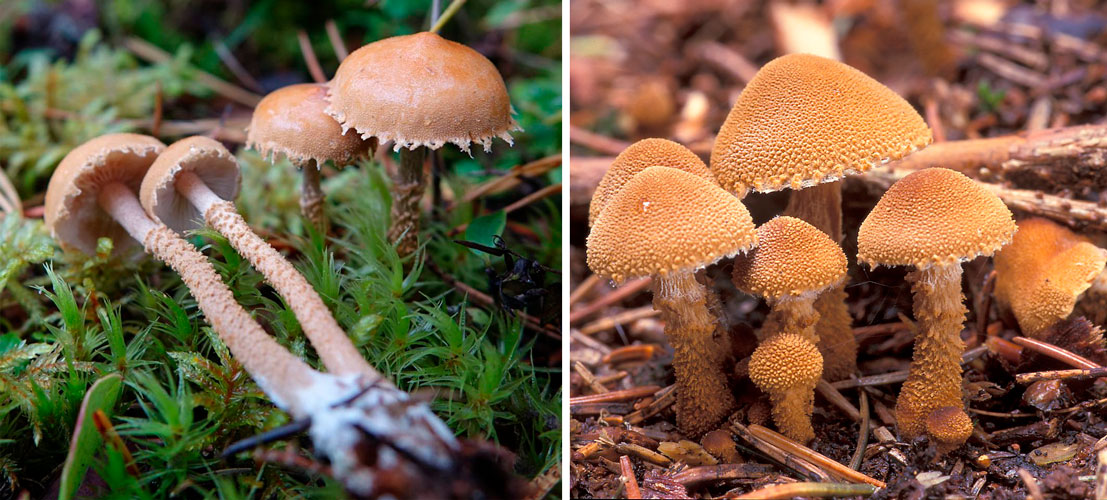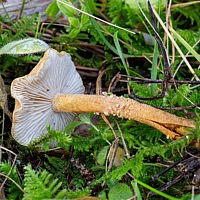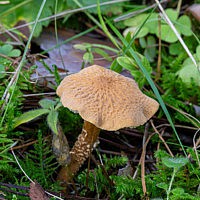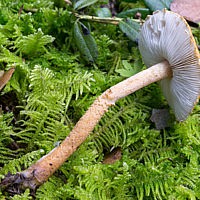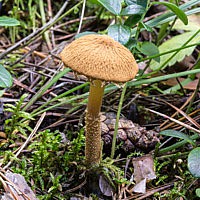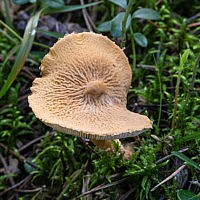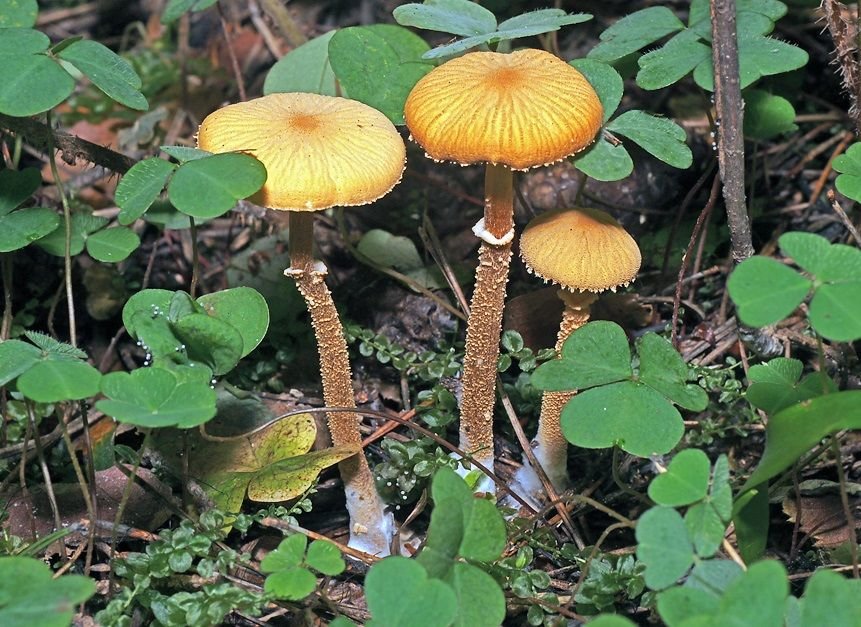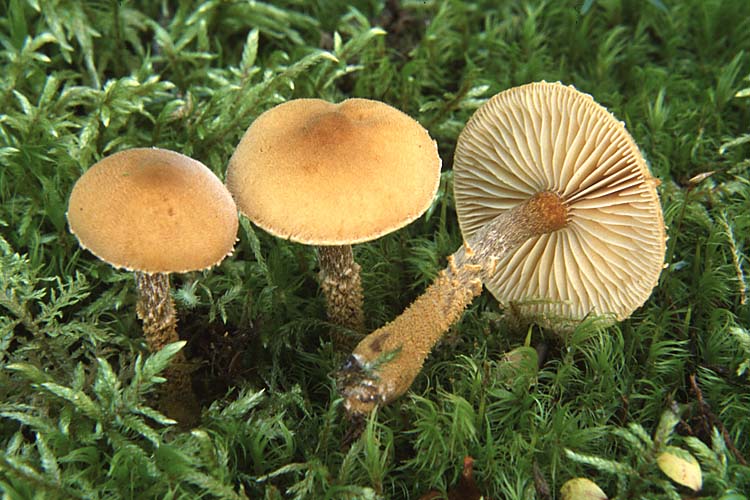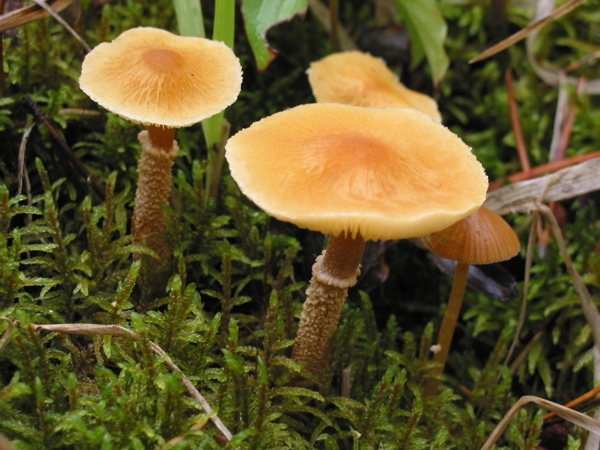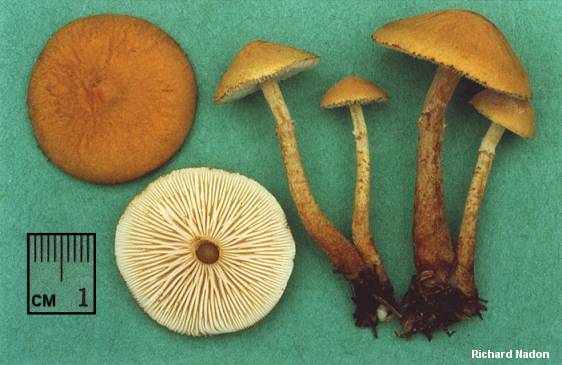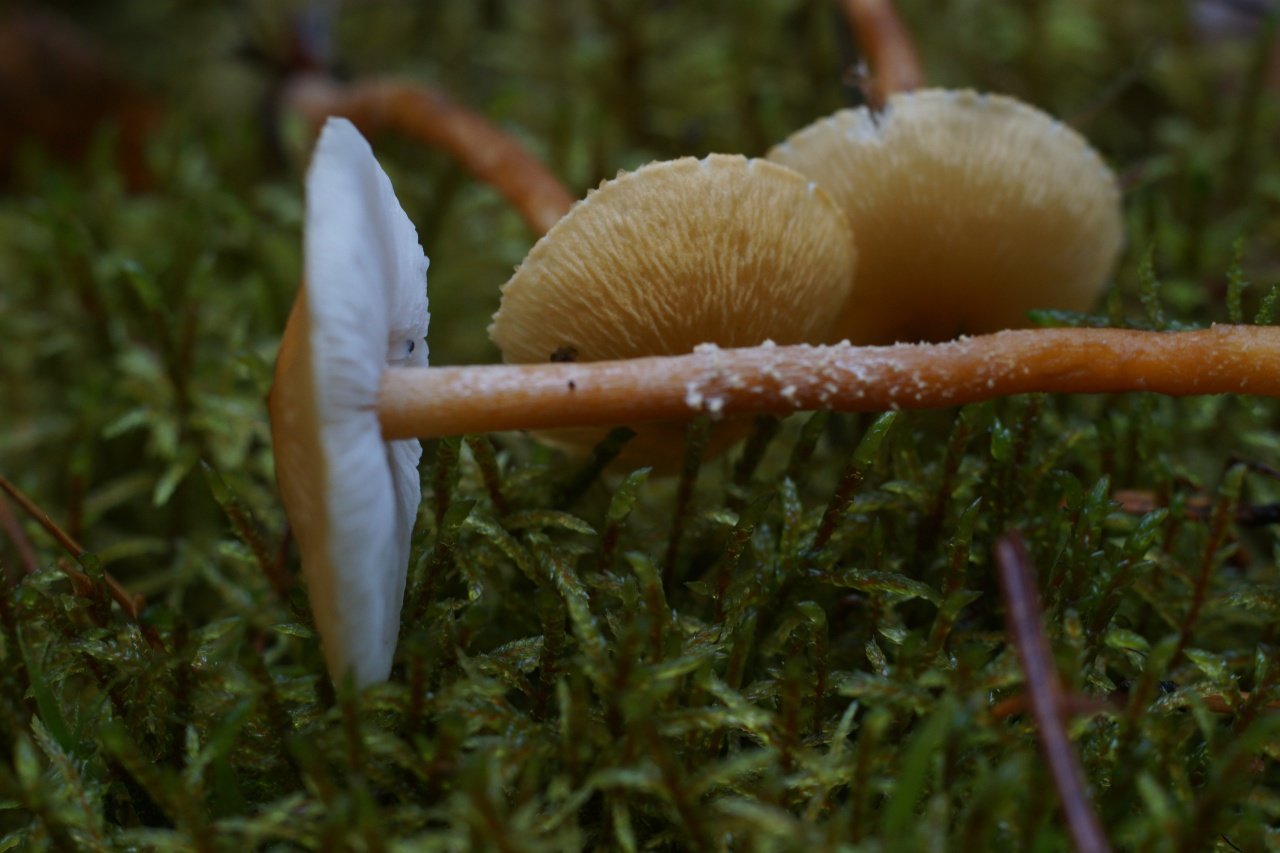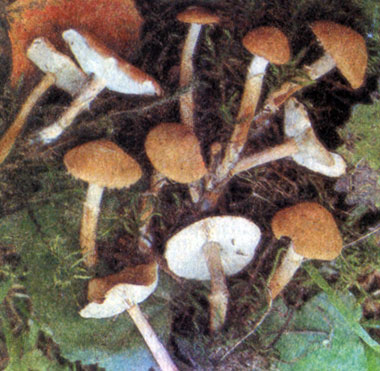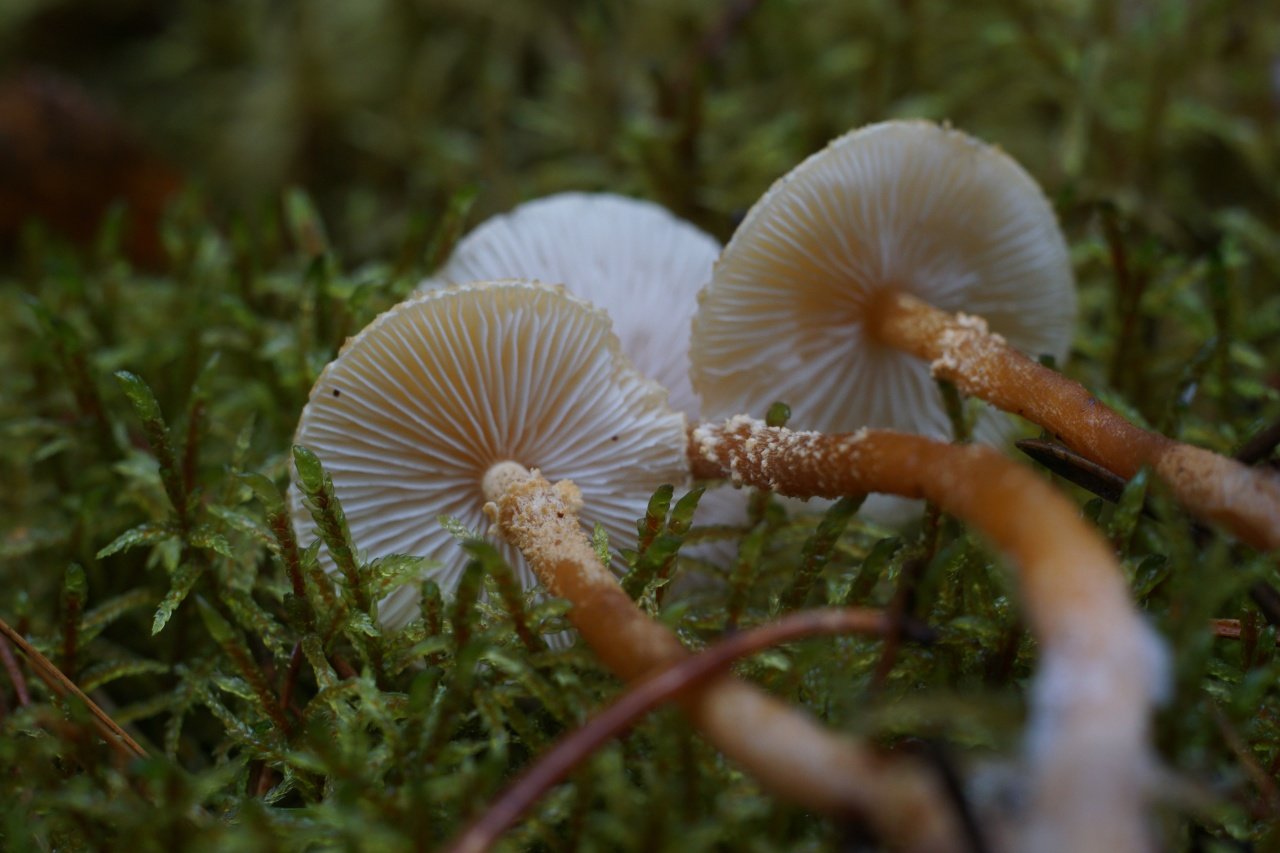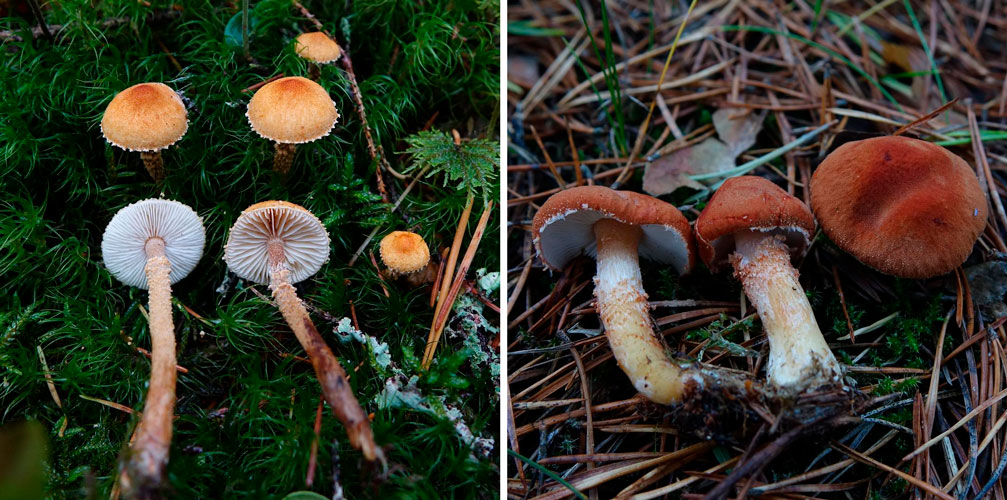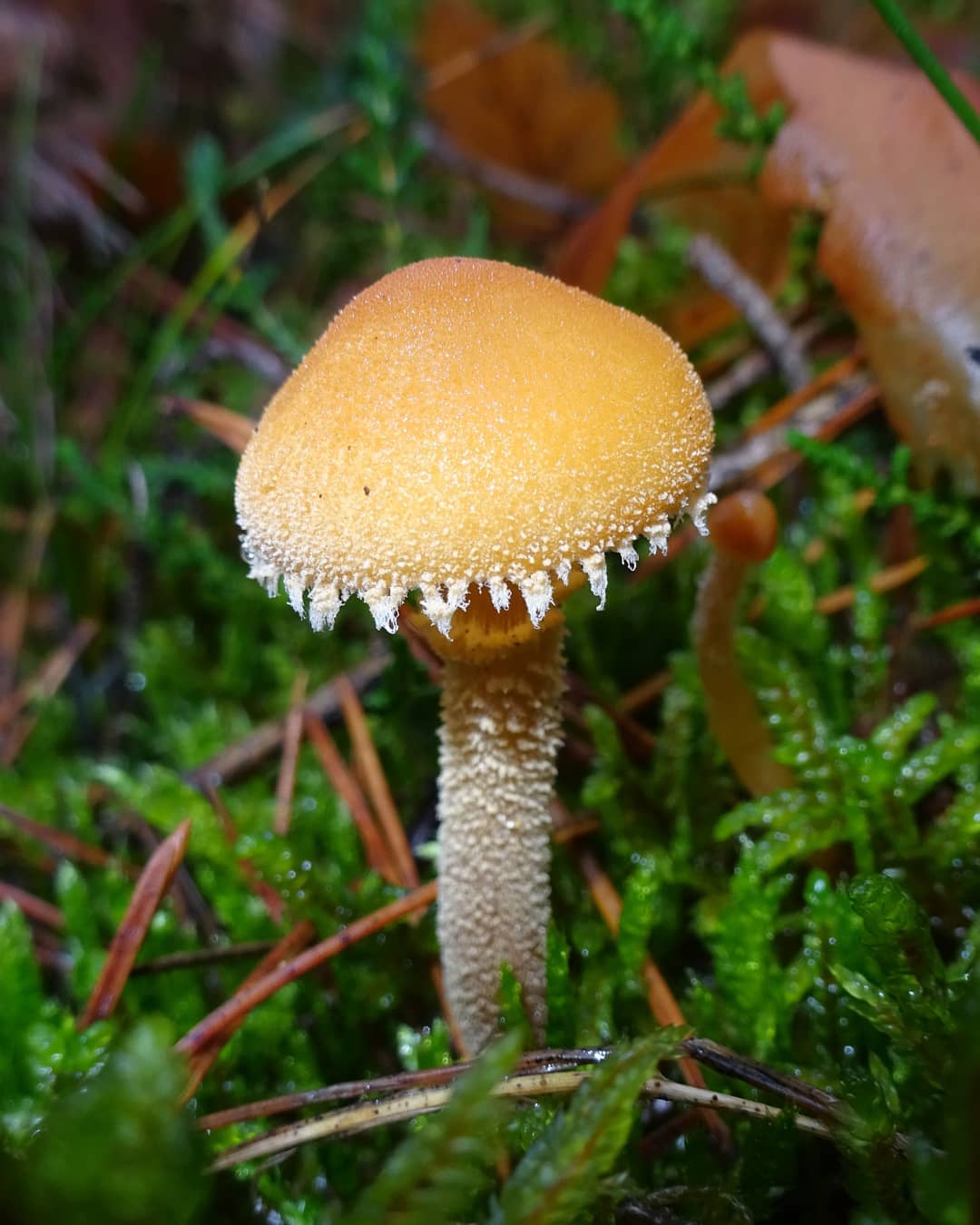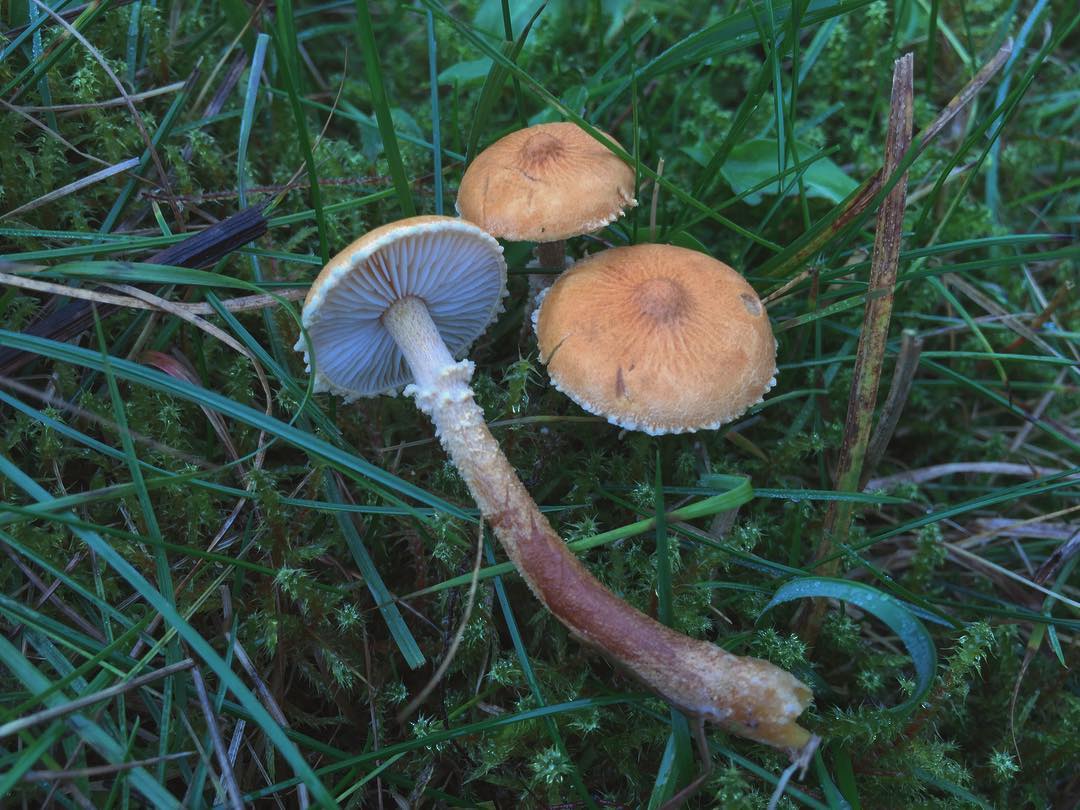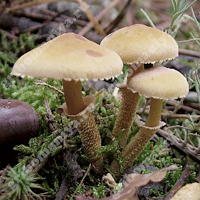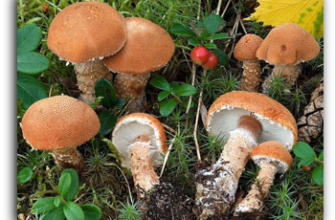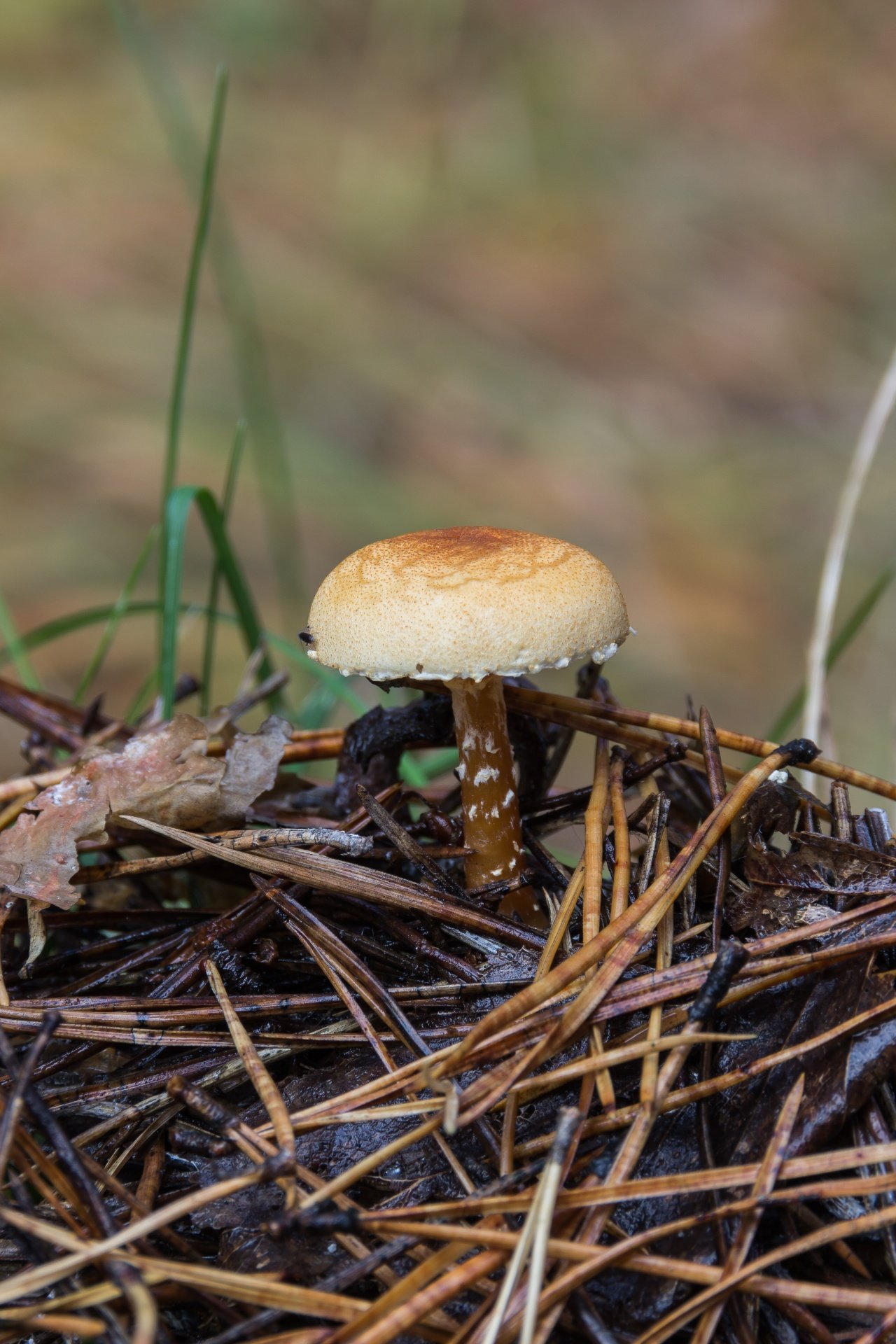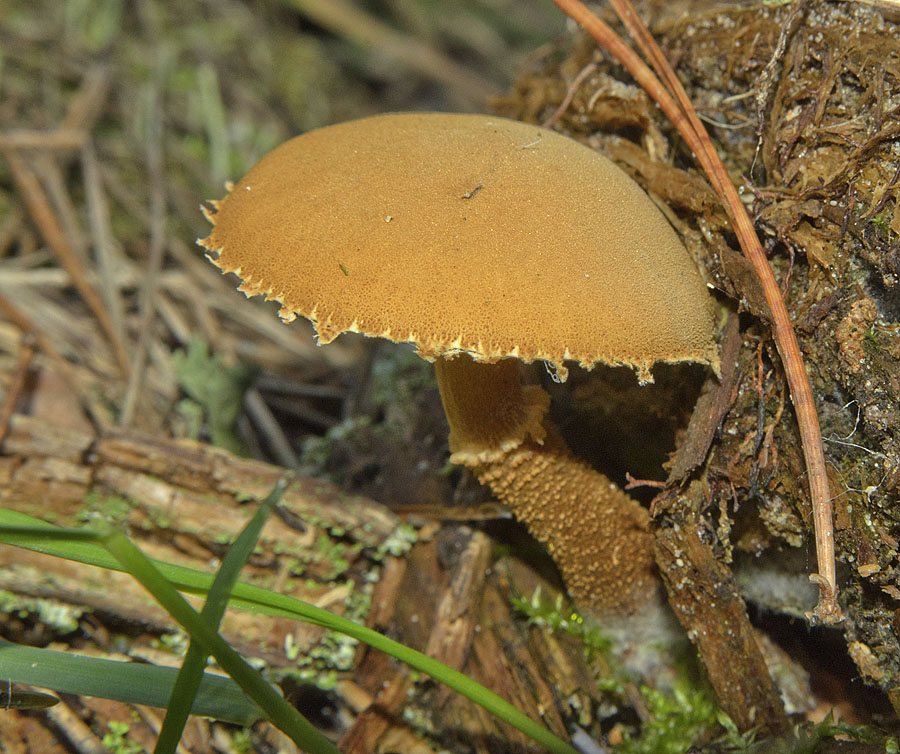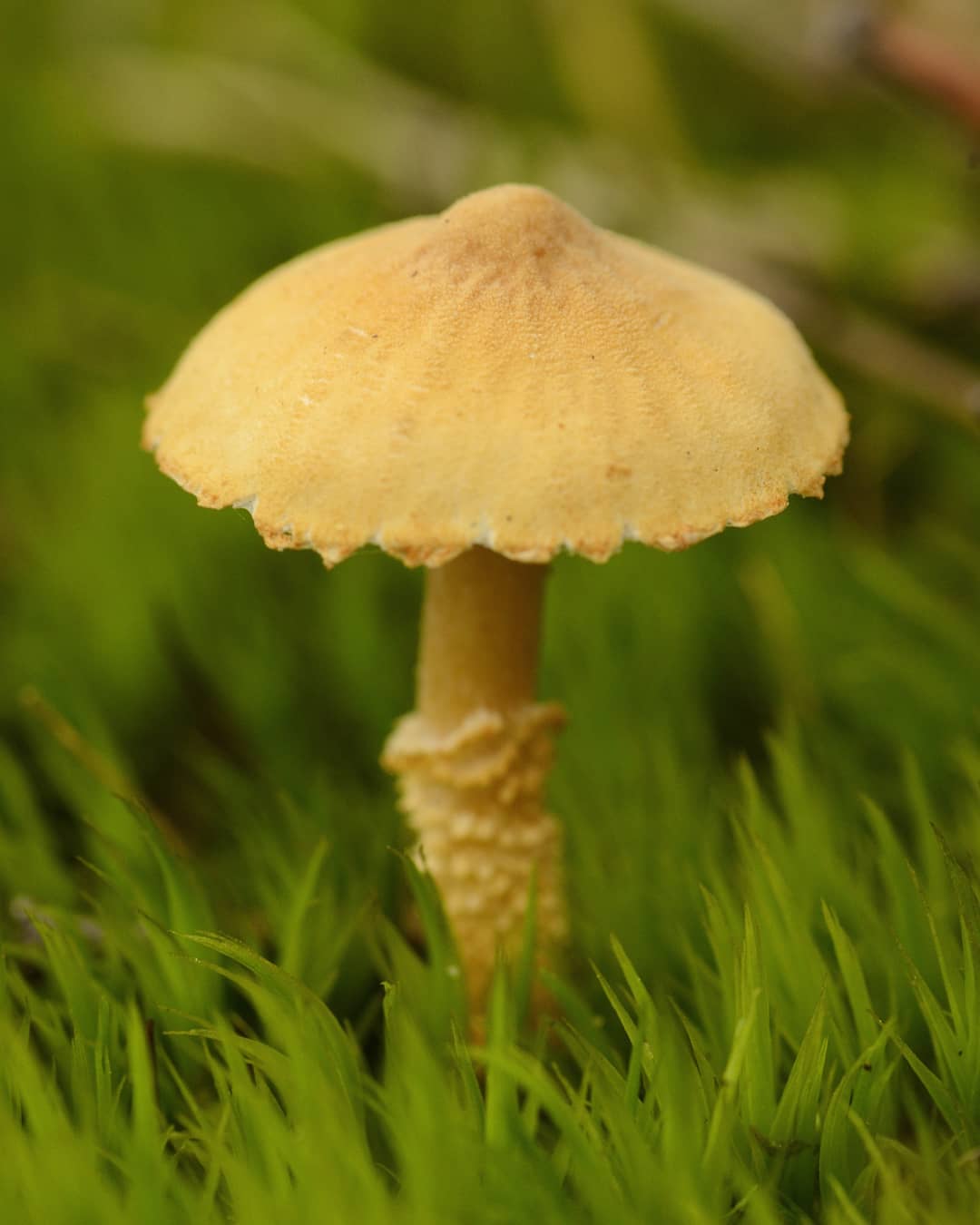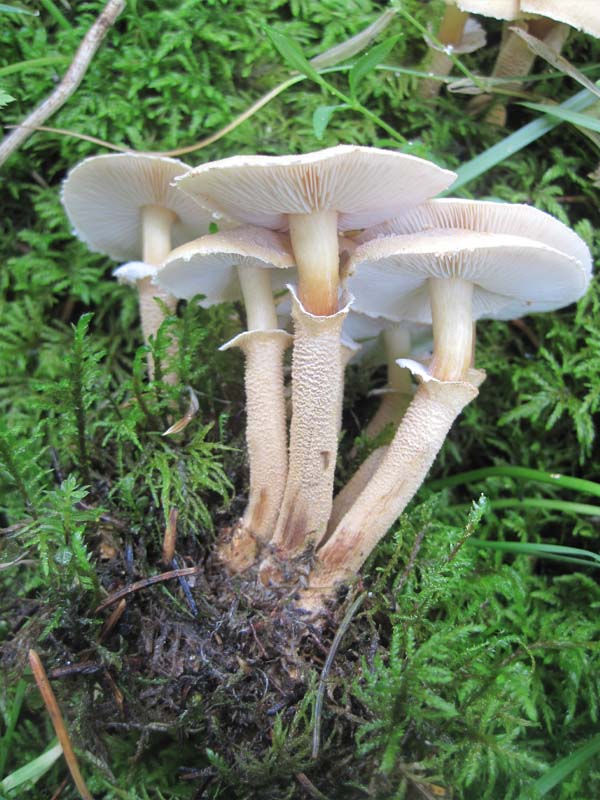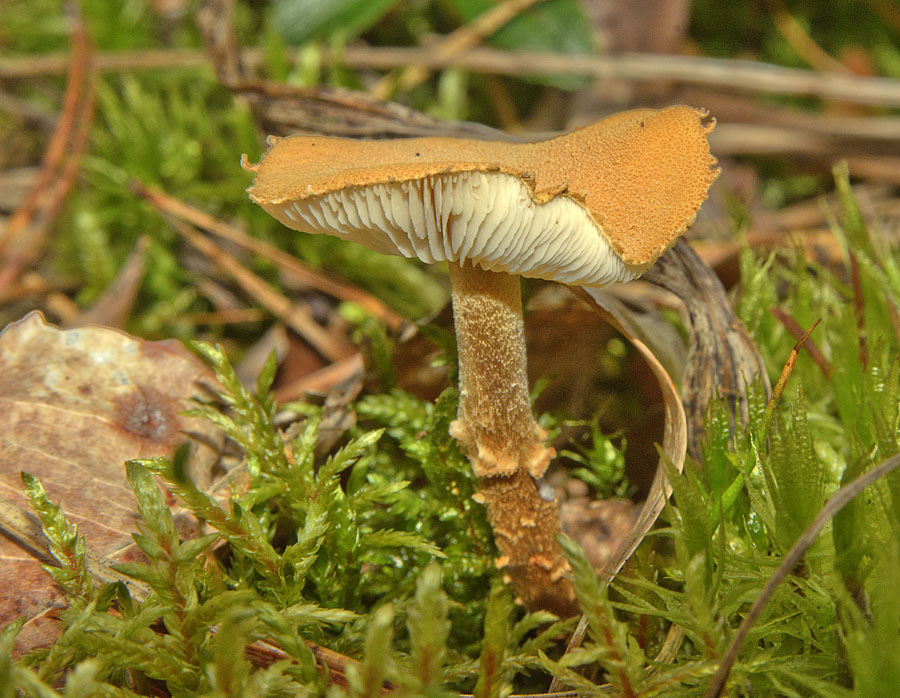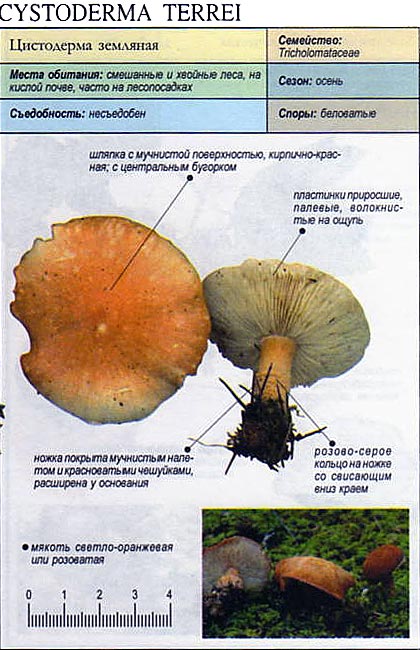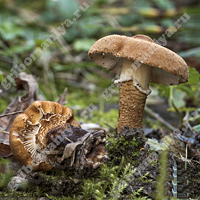Cystoderm red (cinnabar red, Umbrella red, Cystodermella cinnabarina) as they look
Cystoderm red (Umbrella red): photo and description
| Name: | Cystoderm is red |
| Latin name: | Cystodermella cinnabarina |
| View: | Edible |
| Synonyms: | Cystoderm cinnabar red, Umbrella red, Cystoderma cinnabarinum |
| Specifications: |
|
| Systematics: |
|
Red cystoderm is an edible member of the Champignon family. The species has an attractive red color and prefers to grow from July to September among spruce and deciduous trees. In order not to make an error during mushroom hunting and not to put false twins in a basket, it is necessary to analyze the external characteristics of the species.
How does cystoderm look like red
Red cystoderm is a bright, but rarely seen species of the mushroom kingdom. To recognize it and not be confused with toxic twins, you need to know the description of the mushroom and get to know its photo well.
Description of the hat
The cap is small, no more than 8 cm in diameter. In young specimens, it has a bell-shaped appearance; in adulthood, it straightens, leaving a small mound in the very center. The bright orange surface is decorated with smooth, fine-grained, red scales.
The spore layer is formed by thin often whitish or coffee-colored plates. The plates are fragile, partially adhered to the stem. The species reproduces by elongated spores.
Leg description
The leg is elongated, up to five centimeters long. In the middle, it is hollow and fibrous, thickens downward. The surface is covered with countless granular scales of pink or light red color. It becomes discolored as it grows.
Eat a mushroom or not
This representative is edible, has a whitish pulp with a pleasant mushroom aroma and taste. Before cooking, the collected mushrooms are boiled in a matter of minutes, fried, stewed and canned.
Where and how it grows
Cystoderm prefers to grow among coniferous trees in small families, less often single specimens, in regions with a climate of temperate latitudes. Begins fruiting from July to early October. Mushroom picking is best done in dry, sunny weather, away from highways and industrial enterprises.
Doubles and their differences
This representative has similar twins. These include:
- Grainy - a conditionally edible species with an ovoid brown-orange cap. The pulp is dense, odorless and tasteless. It grows in coniferous forests in small families. Fruiting comes from August to October.
- Amiantovaya is a conditionally edible mushroom with a small convex cap and a long cylindrical stem. The pulp is light, tasteless, but with a faint offensive odor. Grows among conifers and deciduous trees from August to October.
Conclusion
Red cystoderm is an edible representative of the mushroom kingdom. It can often be found in coniferous forests from July to October. Before cooking, the collected mushrooms are thoroughly soaked and boiled. Prepared cystoderms are good fried, stewed and canned. Skilled mushroom pickers recommend passing by little-known specimens so as not to harm yourself and your own family.
Cystoderm red (cinnabar red, Umbrella red, Cystodermella cinnabarina): what mushrooms look like, where and how they grow, are they edible or not
The cystoderm is red, or the cystoderm is cinnabar-red, or the umbrella is red - Cystoderma cinnabarinum
Class Basidiomycetes, or Basidiomycetes - Basidiomycetes Subclass Homobasidiomycetes - Homobasidiomycetiidae Group Lamellar, or Agaric Order Lamellar, or Champignon, or Agaric - Agaricales Family Champignon, or Agaricae - Agaricae
Genus Cystoderm - Cystoderma Fayod
A rare edible lamellar mushroom, it has a pleasant mushroom smell. Boil for about 15 minutes.
It grows mainly on soil in moss or rotting wood, prefers pine forests throughout Russia, bears fruit in July-October.
In young mushrooms, the cap is convex, in mature mushrooms it is convexly spread, with the remains of the veil hanging from the edges in white flakes. Its diameter is about 8 cm. The surface of the cap is dry, fine-grained, purple in color, densely covered with small red scales.
The plates are thin, poorly adherent, first white, and then light brown.
The stem is rounded, thicker at the base, about 5 cm high and about 1 cm in diameter. Its surface at the cap is smooth, scaly at the bottom, painted white, slightly reddish at the base. On the stem of young mushrooms in its middle part there is a narrow reddish ring, which is absent in mature mushrooms.
The pulp is thin, soft, reddish-white, with a pleasant mushroom aroma.
Photo author Sergeeva Lidia Moscow region, Orekhovo-Zuevsky district
Cystoderm red (Umbrella red): photo and description
| Name: | Cystoderm is red |
| Latin name: | Cystodermella cinnabarina |
| Type of: | Edible |
| Synonyms: | Cystoderm cinnabar red, Umbrella red, Cystoderma cinnabarinum |
| Specifications: |
|
| Systematics: |
|
Red cystoderm is an edible member of the Champignon family. The species is distinguished by a beautiful red color, prefers to grow from July to September among spruce and deciduous trees. In order not to make a mistake during mushroom hunting and not to put false doubles in the basket, you need to study the external features of the species.
What does red cystoderm look like?
Red cystoderm is a bright, but not often found species of the mushroom kingdom. To recognize it and not be confused with poisonous twins, you need to know the description of the mushroom and carefully read its photo.
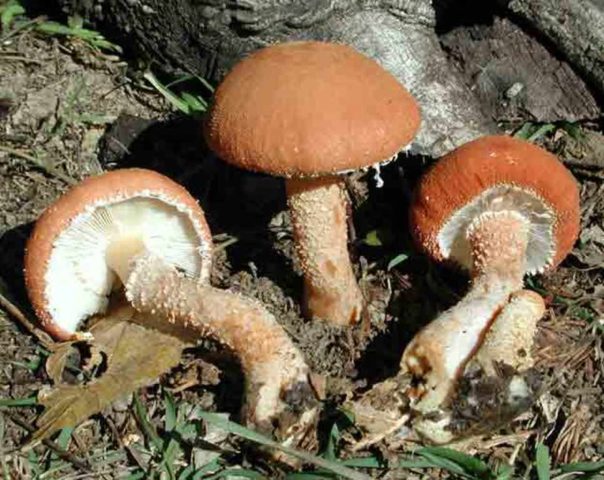
Description of the hat
The cap is small, no more than 8 cm in diameter. In young specimens, it has a bell-shaped appearance; in adulthood, it straightens, leaving a small mound in the center. The bright orange surface is adorned with smooth, fine-grained, red scales.
The spore layer is formed by thin frequent plates of whitish or coffee color. The plates are fragile, partially adhered to the stem. The species reproduces by elongated spores.
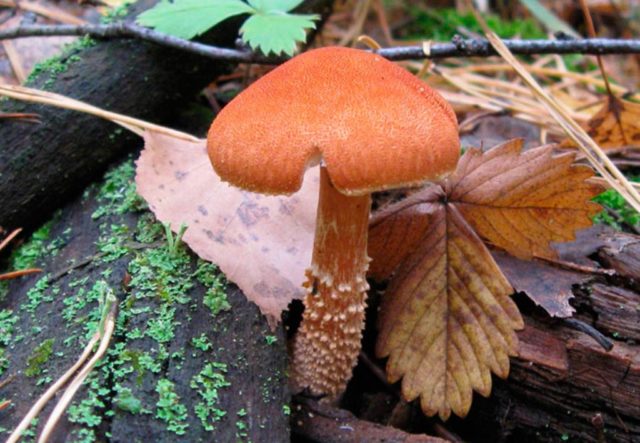
Leg description
The leg is oblong, up to 5 cm long. Inside, it is hollow and fibrous, thickens downward. The surface is covered with numerous granular scales of pink or light red color. It becomes discolored as it grows.
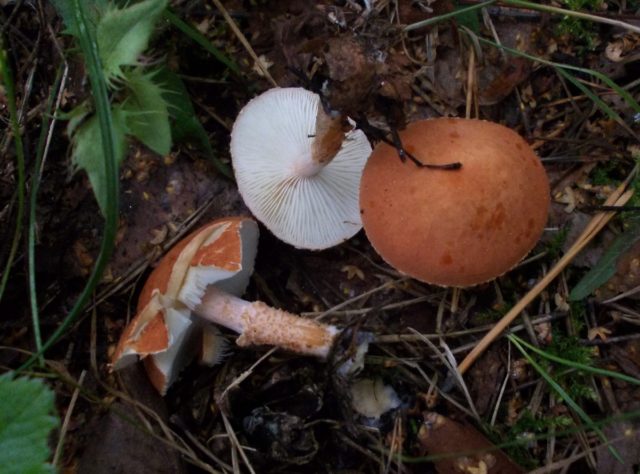
Is the mushroom edible or not
This representative is edible, has a whitish pulp with a pleasant mushroom aroma and taste. Before cooking, the collected mushrooms are boiled for several minutes, fried, stewed and canned.
Where and how it grows
Cystoderm prefers to grow among conifers in small families, less often single specimens, in regions with a temperate climate. Begins fruiting from July to early October. Mushroom picking is best done in dry, sunny weather, away from highways and industrial plants.
Doubles and their differences
This representative has similar twins. These include:
- Grainy - a conditionally edible species with an ovoid brown-orange cap. The pulp is dense, odorless and tasteless. Grows in small families in coniferous forests. Fruiting occurs from August to October.
- Amiantovaya is a conditionally edible mushroom with a small convex cap and a long cylindrical stem.The pulp is light, tasteless, but with a faint unpleasant odor. Grows among coniferous and deciduous trees from August to October.
Conclusion
Red cystoderm is an edible representative of the mushroom kingdom. It can often be found in coniferous forests from July to October. Before cooking, the collected mushrooms are thoroughly soaked and boiled. Prepared cystoderms are good fried, stewed and canned. Experienced mushroom pickers advise passing by unknown specimens so as not to harm yourself and your loved ones.
Cystodermella granulosa
Cystodermella granulosa
Scientific name - Cystodermella granulosa (Batsch) Harmaja
Syn: Cystoderma granulosum
Description
The hat is 2.5-8 cm in diameter, dry, at first hemispherical with a tucked edge, evenly and densely covered with conical granules and warts, flat-convex at maturity, with a slightly uneven edge, from which the remnants of a common blanket often hang in the form of white flakes ; dark brown, cinnamon-brown, with age and in the sun fading to orange-brown, brick-red and even straw color.
The plates are adherent, frequent, slightly serrated, with plates, whitish or yellowish.
Leg - 2-9 cm long and up to 1 cm thick, dry, solid or hollow, cylindrical or expanding towards the base, one-color with a cap, with a rapidly disappearing flaky-scaly annular zone, covered with whitish to dark brown flakes below the annular zone and with a smooth, silky, slightly grooved surface above it; often with white mycelial pubescence at the base.
The pulp is soft, whitish or creamy in the cap and brownish in the stem, with a mild taste and an indistinguishable faint odor.
Spore powder - white
Edible - the mushroom is edible, can be used similarly to Cystodermella cinnabarina, however, due to its small size and scarcity, collection for food purposes does not make much sense.
Habitat and distribution - on soil and among mosses in coniferous, mixed and deciduous forests, usually in small groups, in late summer and autumn. It can also grow on pastures, in gardens, on roadsides. It is widespread in North America and Europe (including the European part of Russia), it is also found in South America, North Africa and Asia (Siberia, the Far East, Japan, Korea, as well as Central and Southwest Asia).
Similar species
At a young or mature age and in a healthy, fresh state, the mushroom is easily identified by the cinnamon brown, without orange and red shades, the color of the cap and the same color of the leg without a ring. However, with age, the color can fade strongly, and the granules on the surface of the cap become invisible or completely disappear. In such cases, microscopy is necessary for accurate determination. The closest species, Cystodermella cinnabarina and Cystodermella adnatifolia, are very similar, but usually have bright red-orange caps and slightly lighter legs. Cystodermella ambrosii, which many mycologists consider only a variety of C. granulosum, is distinguished by snow-white fruit bodies, which, however, acquire a brownish-leathery color with age. Cystoderma amianthinum is predominantly yellow in color, ranging from straw to pale cinnamon. Cystoderma fallax can also be colored in light brown tones, but is well distinguished by a wide, showy and long-lasting ring. Cystoderma lilacipes, which has a similar brown cap, is distinguished by a purple or purple coloration of the upper part of the stem.
I. Krom and V. Kapitonov contributed to the creation of the description.
Granular cystoderm: photo and description
| Name: | Granular cystoderm |
| Latin name: | Cystoderma granulosum |
| Type of: | Conditionally edible |
| Synonyms: | Agaricus granulosus, Lepiota granulosa |
| Systematics: |
|
Granular cystoderm belongs to the class Agaricomycetes, the Champignon family, the genus Cystoderm. This species was first described in 1783 by the German biologist A. Beach.
What does granular cystoderm look like?
This is a small fragile lamellar mushroom with a rounded convex cap, which straightens during growth, maintaining a slight elevation in the middle.
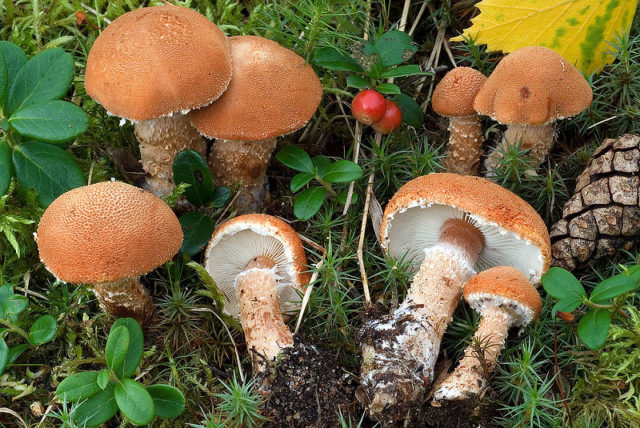
Description of the hat
The cap of the granular cystoderm has the shape of an egg, it is convex, tucked inward, its surface is warty, covered with flakes, along the edges there is a fringe. In older specimens, it is flat-convex or flat with a bulge in the center, covered with dry fine-grained skin, sometimes with scales, wrinkles or cracks.
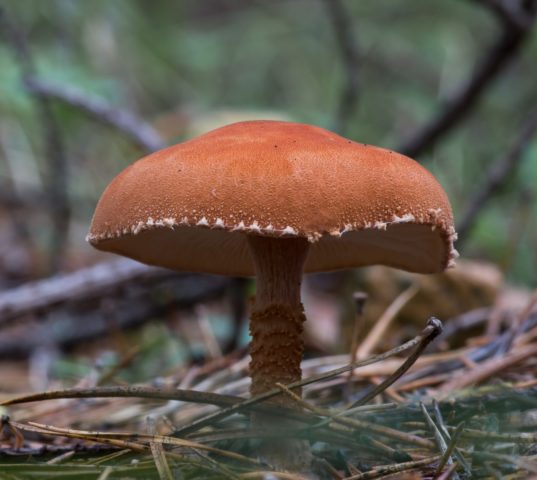
The color is ocher or reddish brown, sometimes with an orange tint. The caps are small, from 1 to 5 cm in diameter. The plates are frequent, wide, loose, yellowish or creamy white.

The pulp is light (yellowish or whitish), soft, thin, odorless.
Leg description
The leg is 2-8 cm high and 0.5-0.9 cm in diameter. It has a cylindrical shape and can expand towards the base. The leg is hollow, with a matte dry surface, smooth at the top, with scales at the bottom. The color is like the hat, only lighter, or lilac. There is a reddish ring with a granular structure on the stem, which disappears over time.
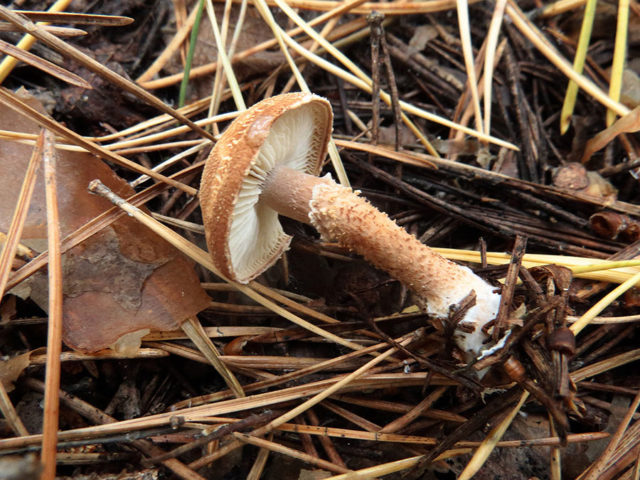
Where and how it grows
Granular cystoderm is common in North America, Eurasia, North Africa. Grows in colonies or singly. Found on mosses and soil, mainly in deciduous forests. Sometimes found in conifers and mixed. Prefers to settle on paths, the outskirts of woodlands, pastures overgrown with bushes. The fruiting season is from August to October.
Doubles and their differences
The closest relative is the cinnabar-red cystoderm. Differs in larger size and beautiful color. The cap can reach 8 cm in diameter. It is bright, cinnabar-red, darker towards the center, with a granular powdery skin, white flakes around the edges. At first, it is convex, with an inward-curved edge, with growth it becomes prostrate-convex, tuberous, with a fringe along the edge. The plates are pure white, poorly adherent, thin, frequent; in mature specimens, they are creamy.
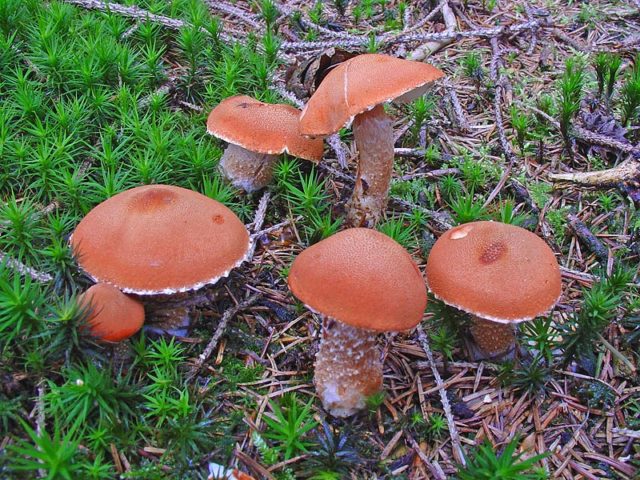
The leg is 3-5 cm long, up to 1 cm in diameter. It is hollow, thickened at the base, fibrous. The ring is red or light, granular, narrow, and most often disappears with growth. Above the ring, the leg is light, naked, under it is a reddish, granular-scaly, lighter than the cap.
The flesh is whitish, thin, reddish under the skin. Has a mushroom smell.
Grows mainly in coniferous forests with pines, occurs in groups or singly. The fruiting season is July-October.
Cinnabar-red cystoderm is a rare edible mushroom. Fresh consumption is recommended after boiling for 15 minutes.
Conclusion
Granular cystoderm is a little-known conditionally edible mushroom. It is most common in North America, but it is also quite rare there.
Notes (edit)
- According to the website Mycobank.org
- Vyacheslav Stepanov ... Cystoderma amianthinum. Mushrooms of the Kaluga region. Archived from the original on August 12, 2012. Retrieved June 20, 2011.
- Fayod, M.V ... Prodrome d'une histoire naturelle des Agaricinés //Annales des Sciences Naturelles, Botanique ... - Paris, 1889. - B. VII. - T. 9. - S. 350-351.
- ↑ 123Kuo, M ... Cystoderma amianthinum. Archived from the original on August 12, 2012. Retrieved June 20, 2011.
- ↑ 12Lesso, Thomas ... Mushrooms. - Moscow: AST, Astrel, 2007 .-- P. 97 .-- 304 p.
- Cystoderm amianthus. Mushrooms of the Leningrad Region. Archived from the original on August 12, 2012. Retrieved June 20, 2011.
- Cystoderm amianthus. Mushrooms of the middle lane. Archived from the original on August 12, 2012. Retrieved June 20, 2011.

